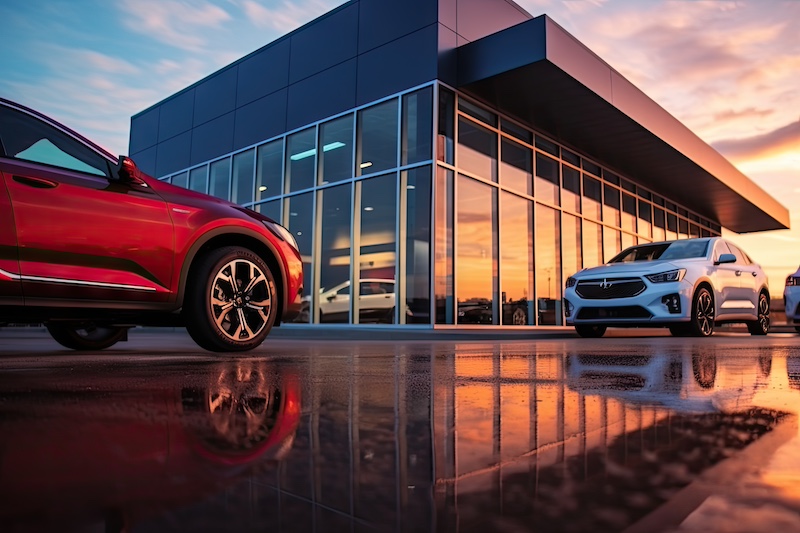Over the last few weeks, I have been spending time discussing the value and benefit of social media with dealers. Invariably, the conversation quickly transitions to “how can I measure the ROI of social media?” When it comes to social media, dealers often want to know what can be gained or how much will my dealership make by leveraging these channels. After all, investments in traditional and digital media should always be made with a detailed eye toward measurable ROI. Traditional media has posed ROI challenges, when trying to determine how much of the weekend lot traffic was due to weekend newspaper advertising. Digital media came along and gave us tremendous ability to track our investments. If you place your inventory on your website, a portal site or offer an online coupon you are able to track the number of views, click through rates, lead details, and hopefully, who converted to a sale. Social media investments are hybrid investments, because they incorporate aspects of both traditional and digital media as well as community outreach.
With social media, you are not pushing an advertising message to the prospective customer, and therefore, you should not look for a measurable response in the traditional sense. Instead, you are trying to become part of a conversation, or in essence, part of thousands of conversations. The trick is to learn which conversations to join and when to join them.
You should join conversations when your dealership receives an online review, either excellent or poor. You should thank and promote a customer who gives you a positive review. You should join conversations when people are having trouble with their cars or trucks. You should join conversations when people are trying to decide if one make/model is better than another. You should actively try to make new friends, and share quality content with as many new acquaintances as you can. In the same way you do this in the offline world, building a large network of friends and advocates in the online world builds the goodwill of the dealership.
Is it easy to measure the goodwill that comes from sponsoring local community outreach? If the dealership helps feed the hungry during the holidays, sponsors local youth sports or is deeply involved in local civic associations, do you measure the ROI for those investments? For dealers to properly grasp the concept of making investments in social media, they simply need to think of it as an extension of them being a friendly part of the offline community. The critical difference is that in the online community, this goodwill can be shared and broadcast across a massive network. Twenty years ago, an unhappy customer could tell a few friends. Today, an unhappy customer likely has at least 150 Facebook friends, and will instantly share their experience with a simple click of a mouse.
On the flip side, positive reviews can also have the same powerful effect. Positive reviews and comments from your online community can reach these same hundreds of Facebook friends, creating powerful goodwill for your store. The ROI is tough to measure in the short term, but in the long term these critical investments in social media will secure your dealerships place in the community for many years to come. Social media investments are a long-term play.
In many cases, the investments for social marketing effectiveness require time, not money. This time needs to come from all levels of the dealership. This includes a commitment from top management. Total involvement from everyone emphasizes the overall importance of social media investments. The participation and conversations need to come from the heart, and need to echo the culture of the dealer principal and store personnel. It has to be real.
Of course, there is a flip side to the ROI argument, and that is LONI, or what I describe as Loss Of Non-Investment. LONI, for example is deciding to sit on the sidelines in the social media world giving up on the positive opportunities that are available, as well as missing the opportunity to be part of conversations, especially conversations about your dealership. You know what they say about online negative reviews that have not been responded to? If you don’t respond…it is the truth. If I read an online review, and the seller has given a reasonable response, I think to myself “Well maybe that is just an unreasonable customer. The seller sure did sound sincere.”
In today’s world of Google Places, with online reviews jumping to a prominence on page 1, choosing not to respond to negative reviews could be the beginning of the end for a negligent dealer. I see it all the time: a dealer idly sits on the sideline with a two-star rating with negative reviews. What is the cost of that neglect? When I talk to these dealers, I tell them, “Your building is on fire…you need to act immediately!” By not responding, these dealers are doing more harm than good. Posting responses essentially costs the dealership nothing on the most important review site out there, Google. It does require your time, your commitment and your genuine sincerity.
I’m not trying to say that you cannot measure any type of ROI from social media investments. Clearly dealers who invest in improving their online reputations will see more click-throughs on Google Places listings versus dealers with a poor reputation. Also, converting a consumer who recently joined your Facebook Fan Page, or who began following your dealership on Twitter is a clear ROI metric. But do you have the ability to measure the entire ROI from responding to negative reviews? What is the ROI from helping someone with a car-related question on Facebook or Twitter? What is the ROI from helping the community online or offline? Tough to completely measure, it is all about the value of the goodwill you want to bring, and the value of your network of friends and advocates. We know the importance of this in the offline world, but we all need to recognize the value in the online world too. Don’t wait, get committed and start today!







